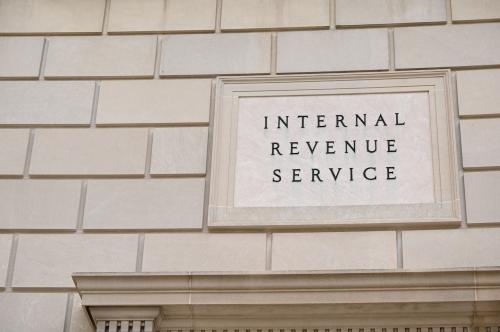On February 15, IRS commissioner Daniel Werfel testified before the House Ways and Means Committee, defending his agency against a barrage of conservative criticism and the looming threat of additional budget cuts. Ever since the IRS got a much-needed revenue boost as part of the 2022 Inflation Reduction Act, the long-beleaguered agency has been subject to renewed partisan attack. As the State of the Union approaches, it is worth taking stock of the state of the IRS.
An effective revenue agency does two things. One, it makes it easy for people to file their taxes correctly. Two, it makes sure people pay the taxes they owe. One side is service, the other side is enforcement. The IRS is investing heavily in both of these areas.
On enforcement, following a mandate from the Biden administration, the IRS promised to shift its attention to upper-income taxpayers. This makes sense from a practical perspective, since high-income taxpayers are responsible for most of the unpaid taxes. It also made sense in terms of equity. Previously, under pressure from Congress, the IRS had spent an increasing share of its dwindling enforcement budget on recipients of the Earned Income Tax Credit, a credit available to low- and moderate-income working families. The result was a tax enforcement system that targeted Black households.
Auditing wealthy people is hard work, of course. It requires much more time and expertise to unravel the tax shenanigans of people who can afford the best lawyers and accountants that money can buy. But the payoff to auditing wealthy taxpayers is high. A recent study has estimated that the return on investment is 12 to 1; that is, one dollar spent on auditing taxpayers in the top 10% of earners yields an additional $12 in revenue. Citing this and other research, the IRS has scaled up its estimates of future revenue from the Inflation Reduction Act investments.
The IRS has also plowed money into improving the service it provides to taxpayers, which is long overdue. In 2021, the IRS received over 282 million calls but, due to immense staffing shortages, only answered 32 million (11%) of them. The GAO found significant improvements to customer service in the 2023 filing season, with reduced phone call wait times, increased phone call responses, and a reduction in the backlog of tax returns, but ongoing issues with slow processing and delayed mail.
But the real service innovation at the IRS this year has been its Direct File pilot program, a free public alternative to commercial tax preparation software. The IRS Direct File program is available in 12 states and is intended for people with relatively simple taxes; several hundred thousand taxpayers are expected to participate in the pilot program this year. There is evidence that free public tax preparation software is of interest to taxpayers; a recent IRS survey found that 72% of U.S. taxpayers would be interested in using such a program, and 68% of people already using a commercial software would switch to the IRS tool if it was provided — no surprise, given that Americans spent an average of $270 on tax filing last year.
The next step would be for such a program to be universally available, ideally with the IRS pre-filling the tax forms with the information it already knows from other sources. Dozens of other countries already provide partially pre-populated forms to their tax filers. Though the U.S. income tax code is extremely complicated, economists have found that the IRS could correctly calculate the income taxes of nearly half of filers — representing 75 million households — just using information the agency already has on hand. Such a system would undoubtedly unleash howls of protest from for-profit tax preparers, who have repeatedly succeeded in preventing public tax preparation, but would save time and money for millions of Americans.
Despite the instability of its funding, the IRS has attempted to make improvements in both service and enforcement. Thus far, the agency seems to be demonstrating moderate success. The coming years will be crucial to see if a reinvigorated IRS can deliver on its promises, or if budget cuts derail its progress. One thing is certain: For the state of the union to be strong, the revenue system must be as well.
The Brookings Institution is committed to quality, independence, and impact.
We are supported by a diverse array of funders. In line with our values and policies, each Brookings publication represents the sole views of its author(s).









Commentary
The state of the IRS
February 26, 2024